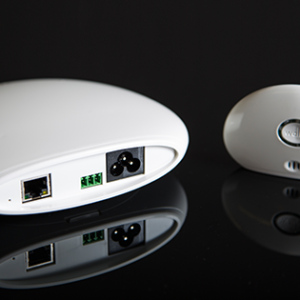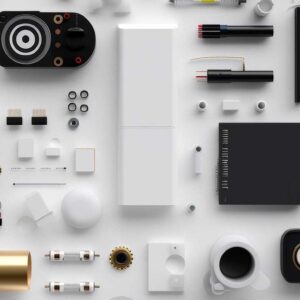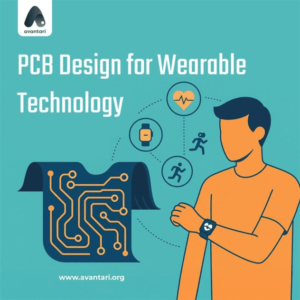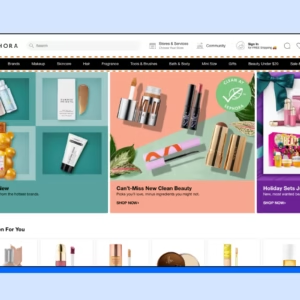In today’s high-velocity digital world, design and technology walk together to craft the success of today’s gadgets. It is a smartphone, smartwatch, or smart home gadget—no matter what it is, the success of such gadgets ultimately lies in the interaction of consumers with the same. That is where consumer electronics product design comes into the picture. It is not all glamour—about designing intuitive, efficient, and emotionally stimulating products that enrich the lifestyle.
With advancing technology, the science and art of consumer electronics product design keep evolving. Let us talk about how consumer electronics product design shapes innovation, why it is more critical in the present technology-driven economy, and how major brands are using design to deliver user-centric experiences.
What Is Consumer Electronics Product Design?
Consumer electronics product design is a design procedure that focuses on manufacturing electronic products that consumers utilize in their everyday lives, including smartphones, laptops, headphones, domestic appliances, and wearables. The design adopts over one discipline—engineering, industrial design, UX, and ergonomics—to ensure that the final product is functional as well as being beautiful.
The aim is to provide products that are not only useful but also user need and lifestyle-congruent. A well-designed product feels natural to operate, appears elegant, and makes an impression—each of which leads to brand affinity and consumer trust.
The Key Elements of Consumer Electronics Product Design
1. User-Centered Approach
The user is at the center of effective consumer electronics product design. User experience and comfort are considered in every decision, ranging from button placement to material choice. Researchers apply research, user testing, and data-driven conclusions to make inferences about behavior, pain, and expectations.
For example, when designing wireless earbuds, simplicity, sound, and connectivity are emphasized—factors that make the user’s experience quietly better.
2. Aesthetics and Functionality
Balancing form and function is product design’s greatest challenge. A product that’s good-looking can get attention, but if it’s annoying to use or unreliable, users lose interest fast. Good design is not about looks—it’s about the extent to which form supports function.
Apple’s a good case in point, having gained such equilibrium in unadorned yet assertive designs that exalt simplicity and ease of use.
3. Ergonomics and Comfort
A product must be natural in the user’s hands or environment. Ergonomic design focuses on human interaction with the device to make it comfortable and reduce fatigue. From a smartphone’s edges being curved to a laptop’s weight, everything has an impact on how users perceive the product.
4. Sustainability
Today’s consumers are green-oriented and are demanding brands to embrace green consumer electronics product design principles. Ecologically sound material, clean energy-intensive production, and recyclable materials are increasingly becoming integral to contemporary design regimes. Samsung and Dell are investing funds in green design programs to minimize their ecological footprint.
5. Technological Integration
The success of modern consumer electronics lies in the incorporation of sophisticated technologies such as AI, IoT, and machine learning into day-to-day devices. Such intelligent features render products more intuitive, reactive, and networked, enhancing the user experience without sacrificing brand appropriateness.
A prime example comprises smart TVs with learning of viewing patterns or voice assistants with user preference customization.
The Design Process of Consumer Electronic Products
Designing a successful consumer electronic product entails several steps:
Research and Concept Formation – Defining user requirements, technology trends, and opportunities.
Ideation and Sketching – Developing concept designs considering usability and brand direction.
Prototyping – Creating physical or computer prototypes to test design and functionality.
User Testing – Obtaining feedback from actual users to determine improvement areas.
Manufacturing and Production – Taking the completed design into a producible product that is salable.
Launch and Evaluation – Tracking performance and customer reaction upon release.
This cycle ensures that the product not only has technical specifications but also provides an outstanding user experience.
Why Consumer Electronics Product Design Is Important
Consumer electronics product design has a ripple effect—that is, beyond beauty—it impacts company success, user experience, and market expansion. Why it matters:
Enhances User Experience: An effective product minimizes user effort to the least and maximizes satisfaction.
Drives Brand Identity: Distinctive design language differentiates brands in a saturated marketplace.
Boosts Sales and Loyalty: Loved products create repeat business and word-of-mouth marketing.
Encourages Innovation: Great design encourages innovative solutions that push technology limits.
As a whole, great design turns technology into something individuals trust, esteem, and rely on every day.
Trends in Contemporary Consumer Electronics Product Design
Minimalist Aesthetic: Simple, uncluttered design continues to be in favor because human beings love simplicity and beauty.
Smart Interconnectivity: Smart ecosystems (IoT) interconnectivity facilitates effortless device-to-device communication.
Wearable Tech: Sleek, ergonomic devices that blend fashion with design.
Voice and Gesture Control: Gesture-based, natural interfaces are increasingly prevalent.
Personalization: Learning products that learn the preferences and contexts of individual users.
All these trends are pushing creativity and technology to product design.
Challenges of Consumer Electronics Product Design
Even with progress, designers are confronted with a sequence of challenges:
Balancing Innovation and Cost: Leading-edge materials and new technologies can drive cost up.
Fast Technological Evolution: On-going innovation makes it imperative to be nimble in design cycles.
Sustainability Pressures: Balancing environmental needs with the need for performance.
User Diversity: Designing for markets in different parts of the world with different needs and desires.
Combining these challenges involves a fusion of creativity, technical skills, and market knowledge.
The Future of Consumer Electronics Product Design
The future direction of consumer electronics product design is to make products smarter, more personalized, and green. Designers will use AI software more extensively, 3D design, and virtual prototyping to drive innovation faster. People-centered design will be the policy driver as well, keeping technology in the service of people—rather than digging them in.
From intelligent wearables to autonomous home appliances, consumer electronics in the future will dissolve the physical and digital divide.
Conclusion
Currently, consumer electronics product design dictates how technology is experienced. It closes the gap between human aspiration and computer ability, making innovation desirable and viable. As technology advances, it will not only determine the future of technology but also our future way of living, communication, and connection.
The easy-to-use, green, and design-centric brands will drive the next revolution of consumer electronics designers innovation—producing products that actually have a meaningful impact on people’s lives.
FAQs
Q1: What is consumer electronics product design?
It refers to the design of electronic products such as smartphones, laptops, and smart home devices with a focus on usability, appearance, and performance.
Q2: Why is design essential in consumer electronics?
Strong design improves user experience, builds brand identity, and makes the product more attractive and reliable.
Q3: What are some of the major aspects of consumer electronics product design?
Design that is user-centric, functionality, form, ergonomics, sustainability, and technical integration.
Q4: What are some of the technologies involved in product design?
Use of software such as AutoCAD, SolidWorks, Fusion 360, and Figma is prevalent for 3D modeling and visualization.
Q5: What is evolving in the future of consumer electronics product design?
The future is highlighting AI integration, sustainability, personalization, and frictionless device-to-device connectivity.





